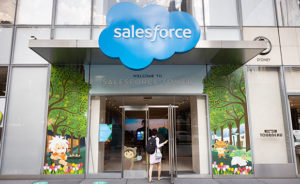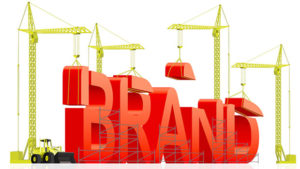I was doing research when I found a suitable definition of levels of abstraction. Honestly, it’s a topic most of us know intuitively without ever fully defining it, like rain. Rain is water droplets that fall from the sky but few of us think about how and why clouds form and weather fronts move. We just know rain, also snow, and when pressed we bother tracking weather movements to see if a planned outdoor activity makes sense. But I wouldn’t say that’s understanding rain.
Levels of abstraction are different and paying attention to them might give us a heads up on what happens next in CRM.
There are three levels of abstraction that we can study to derive benefit, and this is abundantly clear in CRM. First there’s the object, a material product or service that is the thing we trade money for. Then there’s the experience, see where I’m going? Lastly there’s the concept.
Customer Experience by Design
We began CRM in the late 1990s with the idea of using software to help market, sell, and service concrete objects — and CRM was itself a thing that we used to do it. That lasted a while until customer experience became the rage and that rage continues today.
By analogy, we might buy and sell coffee beans (objects) and we can add value to them in many ways. For instance, grinding and packaging them then selling a branded product. All that stays in the object level though.
Going to the neighborhood coffee shop will get us to the experience level because we go there to meet friends or use the Wi-Fi, whatever. In so doing we gain a coffee or coffee shop experience. We gladly pay significantly more for the same coffee we could make at home because we’re getting that experience. Vendors are happy to provide the experience because it’s a way to add value and make money.
CRM has enabled us to add significant value to our products — and especially to our services — precisely because it gives us the chance to craft customer experiences.
Essential Tech Companies
I walked away (metaphorically) from Dreamforce last week trying to figure out what kind of company Salesforce has become. My early attempt came up with the idea that Salesforce, and a few other tech companies, had become essential — ones that we might be able to live without but who would want to find out? To me, essential is a good operating hypothesis but I am not sure it is the whole story.
But concept is not the whole story either except that could become part of the operating hypothesis. Whether it’s essential, concept or both, the idea is becoming important to CRM because concept embodies an organization’s beliefs and values.
Think about it. We use CRM to deliver customer experiences, but we’ve also discovered that experience can be good or not so good — and the savvy CRM vendors and their direct customers intuitively understand the need and benefit of delivering consistently positive experiences to customers. That’s the next level of abstraction.
Beliefs and Values
Consistently good customer experiences are what analytics, and that somewhat worn idea of the 360-degree view of the customer, is ultimately about. I don’t have data on this, but I’ll wager my house that no vendor wants customers to have bad experiences.
That said, you can’t get to consistently good customer experiences unless you first define the beliefs and values of your business and then embed them in the software you use to market, sell and service customers.
Those beliefs and values now extend much further than how you engage customers at the object level for two reasons. First, the obvious matter of serving customers, which we’ve covered. Second is the issue that customers are not our only constituents.
In addition, we must be mindful of our investors, employees, partners, and our local communities. In my research and that of other organizations, it’s plain to see that companies that are well thought of by all their constituents just do better, all things equal.
Happy employees stay longer at a job and may even recruit friends; they also advocate for their company and its products. Happy investors might be willing to give the benefit of the doubt over a disappointing earnings report, and partners want to engage with others that can create pull-through demand which comes from having happy customers. Local communities need more than a tax base and local businesses understand the need to be good citizens.
So look at what Salesforce has been doing with products like Philanthropy Cloud. It’s not simply a demonstration product that shows what the platform can do nor is it a way to give big companies a way to check off a to-do list item. Philanthropy Cloud is a tool that both Salesforce and its customers can use to demonstrate its beliefs and values to all constituencies.
Promoting Sustainability
Now there’s Sustainability Cloud which was introduced a short time ago, but at Dreamforce, Salesforce made a point of demonstrating how it can be used to help businesses calculate their emissions footprints. There’s no doubt that sustainability is becoming an important value for all a business’ constituents. So it makes sense to promote it.
I am not saying that anyone needs to buy-in to all the clouds or that CRM is getting soft on the core objects of business. I am also not saying that Salesforce is the only player. Microsoft and Oracle are in the mix as well.
Rather, this is to say that the market is shifting, that public sentiment is gravitating at least in part to more conceptual ideas of what it means to be the customer of a vendor. There’s a role for CRM in all of this too.



























































